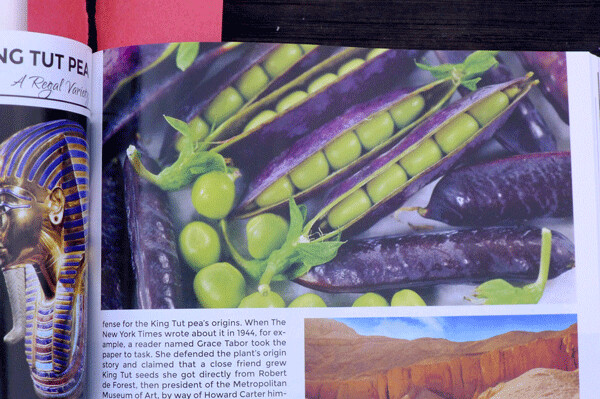News & Articles
Browse all content by date.

On the last day of last November my first 2020 seed catalog arrived. The timing could not have been better. Thanksgiving sticks a fork into the growing season, marking the end of harvest, and ushering in a quiet time of rest and cozy contemplation. Winter is the time to cozy up with a cup of tea and some reading material.
Seed catalogs can help make gardening fun, even in failure, and even when you aren’t gardening. They offer educational dreams where reality falls short, inspiring ambition and hope, however unrealistic, with colorful, flattering depictions of robust plants. And to the successful gardener, seed catalogs are indispensable.
Gardening is up more than 200% since 2008, according to the National Gardening Association began keeping track. Today, according to NGA research, 35% of American households grow a lil’ food, and millennials are the fastest growing demographic in this trend. Not surprisingly, there is a seed catalog to match every gardener these days, from latte-sipping community garden plot worker to leather-handed cowgirl.
On one hand, there is the whimsical nostalgia of the Fedco, with its line-drawn depictions of a garden world populated by gnomes behind lovage plants, spade-wielding superheroes flying through edible solar systems and other heroic depictions of farmers. At another extreme is the the no-nonsense approach of Johnny’s Seeds, streamlined and farmer-oriented, with the fastest delivery in the business.
If those two catalogs mated, their spawn would resemble the Baker Creek Heirloom Seed catalog that arrived this past November. It has that old timey feel of Fedco, the budding entrepreneurism of Johnny’s, and a mission to rescue and share as many heirloom traits as it can. Especially, it would appear, the purple ones.
From the Sugar Stars phlox flowers featured on the cover, to various blueberry- and lavender-hued representatives from every category fruit and vegetable, the tone of this year’s Baker Creek catalog is notably purple. The offerings include seeds for purple Brussels sprouts, purple corn and purple asparagus. There are purple “greens” like mizuna, scarlet kale and blue kale; and plants so dark purple they are black — black radish, black Dakota popcorn, black garbanzo beans.
My 148-page catalog includes an ad for its larger and more comprehensive cousin, Baker Creek’s Whole Seed Catalog, replete with a purple Hopi Black Dye Sunflower on the cover. The Whole Seed Catalog is like a normal seed catalog on plant-based steroids, with information on 1,100 varieties of heirloom seeds, along with historical notes, cultivation tips, and endless seeds for thought, with a full spectrum of colors — not just purple. I picked up a copy at Barnes and Noble.
Jere Gettle founded Baker Creek Seeds in 1998 when he was 17, and printed its first catalog from his family home in the Ozarks. In summer 2000 his young company hosted the first of many annual heirloom festivals.
Gettle has an elfin look, like a drawing in the Fedco catalog, and is partial to plants that attract butterflies and other pollinators. I asked Gettle via email why his catalog is so purple this year.
”We have tried to increase all of our colorful varieties,” he said. “But especially the color purple.” High in anthocyanins — the antioxidants found in blueberries — as well as being just plain pretty, purple plants are his best-selling seed category: “People can’t get enough of the color purple,” Gettle says.
I had my eye on some Peruvian black Maiz Morado corn, which grows more than 8 feet tall and produces long ears of beautiful and delicious shiny black kernels. Alas, it was out of stock, according to the web page, which is updated in real time. It will be in stock by mid-January, Gettle assured me.
I’ll stay ready to order when the supply comes it. Meanwhile, my Whole Seed Catalog has already gotten plenty of use these dark winter days. Everyone in my family has stuck a bookmark or two in its pages, marking the likes of Dragon Tongue beans, Golden Alexandria wild strawberries, Muncher cucumbers, MInnesota Midget Melons, my Inca corn, and King Tut Purple Peas.
The origin of this plant is hotly debated, with candidates in the UK, Egypt (of course) and Everett, WA. One thing everybody can agree on is this purple pea has been around a long time, and is a beautiful, delicious heirloom shelling pea variety. The purple pea pods are edible, if you want the extra anthocyanins, but not fleshy and juicy like a snap pea pod.
The peas themselves are gargantuan green spheres that seem to burst from the purple pea pods, and are the real treasures here. Whether you want to make a thick pea soup, or use your peas as a way to flick some green into whatever you are cooking, these verdant granules will find ways into your food.
Peas are a fun crop to grow and eat, and a good way to gauge the readiness of soil for springtime planting. My farmer friend Patti plants peas as soon as the ground thaws. She keeps planting them until they start to sprout and grow. That is when she knows it’s time to plant the rest of her peas.
When the peas sprout is a lovely time of spring. It’s a time gardeners long for all winter, and a threshold past which its safe to transplant hardy seedlings like broccoli or plant the seeds of tough plants like pink celery, yellow tomatillos, red melon, blue kale and green spinach. Like a box of Lucky Charms, but with more plant.
| Tweet |


